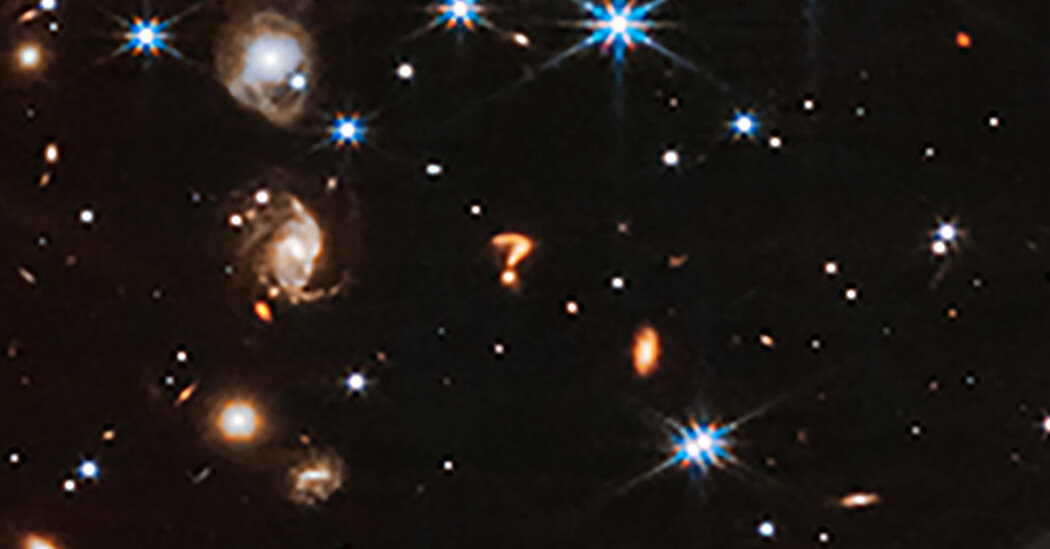The astronomers will tell you it is just an optical illusion, a pair of galaxies caught in the act of mating as seen from the wrong angle. Happens all the time.
In the 1960 and 70s, Halton Arp, an astronomer at Hale Observatories in Southern California, caused a ruckus by asserting that galaxies millions of light-years apart according to conventional cosmological calculations — but which appeared superimposed together in the sky — were interacting locally. His claim cast doubt on the Big Bang theory of the universe. Astronomers now agree that he was wrong.
Now a genuine question mark has been discovered, in the corner of a recent Webb telescope observation of a pair of dust clouds known as Herbig-Haro 46/47 that are in the process of forming into two stars. The discovery made a splash on social media. “Ze space mall information kiosk has been found by JWST,” a commenter joked on X, the site formerly known as Twitter.
Chris Britt, an astronomer at the Baltimore-based Space Telescope Science Institute, which runs the Webb telescope, attempted to explain. “This particular pair is so far away, it’s hard to make out much detail,” he said in an email exchange. “But there are some similar looking galaxy mergers that have been seen closer to us, including this one called II Zwicky 96.”
If you accept the spooky rules of quantum mechanics and the premise, as Einstein disapprovingly put it, that God plays dice with the universe, then you have to accept that chance and randomness are a fundamental bedrock of reality. In such a universe, where the laws of physics have been grinding away for 14 billion years, coincidences are unforeseeable but inevitable.
Still, there are times when it’s worth stepping back to listen to “the music,” as Einstein once referred to the beauty and mystery of the cosmos. You are free to consider that question mark as alien graffiti, a comment on both their and our relation to existence. Point being, we’ve barely begun to know anything — that’s why we build telescopes.
Once the Webb has completed its rounds of investigations two decades from now, we might know a bit more about how this bowl of stars works. But we still won’t know why we’re here. That question mark, our profound cosmic ignorance, is one of the great gifts of science.











